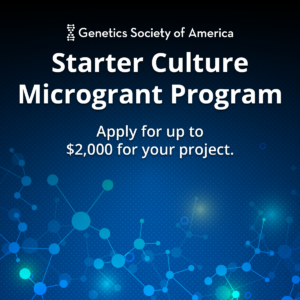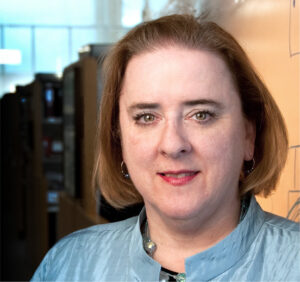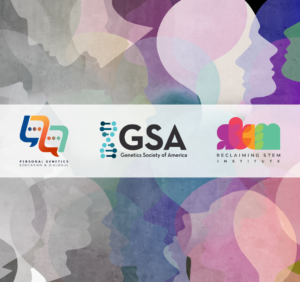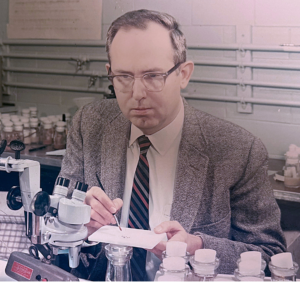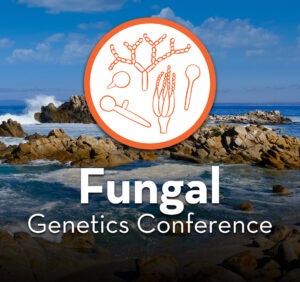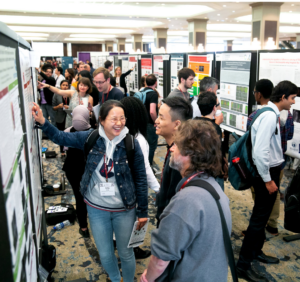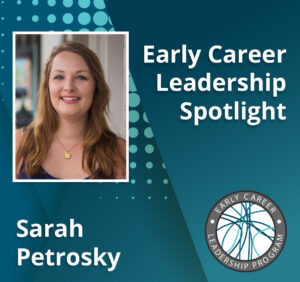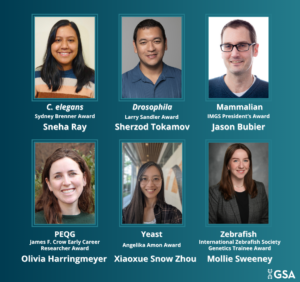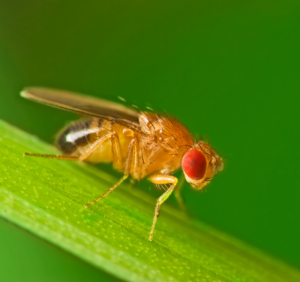Today’s guest post was contributed by Caitlan Rossi, a scientific and medical writer. Her work can be found at caitlanrossi.com.
For Noah Whiteman, a Professor of Evolutionary Biology in the Department of Molecular and Cell Biology and Department of Integrative Biology at the University of California, Berkeley, both work and life are rooted in four billion years of co-evolution between plants and animals. “If you just look outside at your garden, you can envision Darwin’s entangled bank. Even in our guts, the bacteria are co-evolving with each other in a constant arms-race of one-upmanship. The inner-world, the outer-world—in my view, interactions that give rise to the great diversity of life that we see are largely the product of co-evolution.” This widespread phenomenon is difficult to measure. However, throughout Whiteman’s distinguished career, he has explored how interactions between species inspire adaptation, ultimately uncovering new insight into how plants resist predatory herbivores and how herbivores co-opt these defenses for their own good.
Islands on islands
With a background in entomology, Whiteman’s doctoral research took off by studying insects living on social hawks in the Galapagos Islands—birds that his advisor Patricia Parker had been studying for some time. It was on this archipelago that he started seriously investigating the power of co-evolution. After attending a lecture on co-speciation between birds and their feather lice, Whiteman wondered if these cold-blooded parasites were the key to unlocking the history of Galapagos hawks as they migrated from island to island over thousands of years.
To test his idea, Whiteman captured one of these apex predators, sprinkled pyrethrum (derived from chrysanthemum) on its feathers to paralyze the lice, and holding the bird over a tray, massaged its plumes to loosen the parasites. “This was the real moment of crystallization,” he recalled. Using the DNA from the lice (ultimately, he captured 200 hawks, and many, many more lice), he reconstructed the colonization events that the parasites, and therefore their hosts, likely took throughout evolution. “These unwelcome passengers were brought by hawks 150,000 years ago to those islands and they’re still there. Islands on islands…that we could use as a model for understanding how co-speciation between hosts and parasites unfolds,” Whiteman concluded. Inspired by these birds of prey, he recognized the tremendous potential of studying how host-parasite interactions might also drive genetic adaptation in each over time, a tenet that would form the basis for much of his outstanding research.
Turning to plants as hosts
Whiteman made the scholarly leap from evolutionary genetics to experimental genetics at Harvard. Through a Kirschstein-NRSA postdoctoral fellowship with Naomi Pierce and Fred Ausubel in 2006, he began to study how Arabidopsis thaliana (the model of choice for most plant geneticists) protects itself against its natural enemies like herbivorous insects. “It was like a 180, going from an endangered bird in an oceanic archipelago to a plant that grows in a parking lot,” Whiteman said. Indeed, it was in a park outside Cambridge walking his dogs that he found the focus of his newest project: Scaptomyza flava (S. flava)—a drosophilid fly closely related to the fruit fly Drosophila melanogaster—which feeds on Arabidopsis. Whiteman’s goal was to develop the fly into the first genetic model herbivore of Arabidopsis. As the fly shifted from feeding on rotting plants to living plants, it evolved new smell receptors to detect mustard oil—the toxic compound produced by Arabidopsis as an insecticide—and lost the receptors its ancestors used to find rotting plants. However, instead of being harmed by the mustard oil, the fly evolved enzymes to break it down more efficiently, adapting to overcome the very defense meant to kill it. With these new data, Whiteman developed transcriptomic and genomic tools that formed the foundation of his first lab at the University of Arizona, becoming an emerging leader in the study of the evolution of intimate species interactions.
The monarch butterfly effect
It was while running his first lab that Whiteman was approached by Cornell evolutionary ecologist Anurag Agrawal and University of Hamburg evolutionary physiologist Susanne Dobler to join them in studying toxin resistance in the monarch butterfly. And then, as often happens in science, a series of synchronistic events unfolded. In 2012, Science published a paper introducing CRISPR as a groundbreaking tool for genome editing led by Emmanuel Sharp and Jennifer Doudna (who would later become a colleague). In the same year, PNAS published a paper exploring how insects adapt to resist potent heart toxins in plants like milkweed. Intrigued, Whiteman and his friend and colleague Kailen Mooney wrote a News & Views piece for Nature suggesting that researchers study these milkweed mutations by using CRISPR to swap them into fruit flies.
“I never thought I would do it—we were just saying it was a good idea because you could study the effects of the mutations across all levels of biological organization rather than just in cells,” he said. After the initial grant with Agrawal and Dobler ran out, Whiteman tapped his new National Institutes of Health grant to finish the work. After seven years and countless failed attempts, together with Simon Groen and eventually Marianthi Karageorgi, the group was able to create a triple-mutant monarch fly that, when fed the potent heart toxin, remained fully resistant. “When we got that in the lab and put the flies on media containing 30 mmol cardiac glycoside—which would kill a roomful of elephants—the flies were perfectly fine!” Whiteman described. These groundbreaking “monarch flies” marked one of the earliest examples of how germline genome editing using CRISPR can substitute single nucleotides between species to retrace animal adaptation over time.
Making science better
Whiteman continues to make significant contributions to evolutionary genetics through the close lens of host and parasite. In another elegant project, his lab at Berkeley sequenced the S. flava genome, exploring how the fly and other distantly related Drosophila species acquired a gene from bacteria that encodes a toxic, DNA-nicking enzyme capable of killing animal cells. Ultimately, the flies appropriated the virulent bacterial gene for themselves, subsequently using it to fend off their most important enemies, the parasitoid wasps. The newfound immunity of these flies demonstrated how herbivores are constantly adapting, co-opting chemical defenses against plants and enemies alike. Additionally, Whiteman’s recent work expands such findings beyond the bench and into popular science. In 2020, he received a Guggenheim fellowship to write his book Most Delicious Poison: The Story of Nature’s Toxins—from Spices to Vices, amplifying genomics in the public conversation.
Join us in congratulating Noah Whiteman on receiving the Genetics Society of America Medal for his outstanding contributions to the field of genetics. “I dedicate this award to all of the mentees and collaborators with whom I’ve worked with over the years,” he said. “My mentees and collaborators often come from very diverse walks of life, and this brings unique perspectives that have made the science better—I know this.”
2025 GSA Awards Seminar Series
In this seminar, Noah Whiteman discussed how animals and other multicellular eukaryotes have gained novel adaptations through horizontal gene transfer from viruses and prokaryotes. He focused on discoveries from his research group that identified a novel, humoral innate immune factor in drosophilid flies and other insect species that they deploy against parasitoid wasps that is encoded by a gene gained through horizontal gene transfer from bacteria and their phages.
Recordings will be available below:







